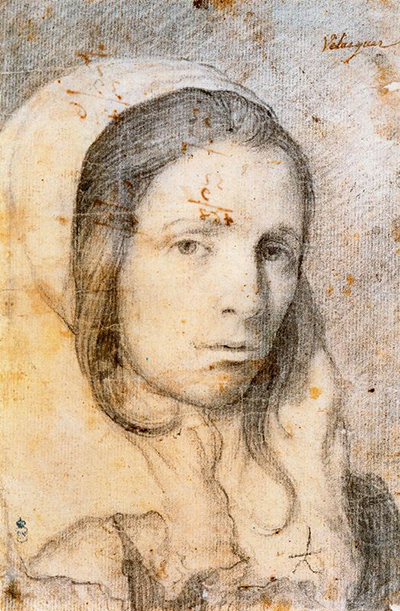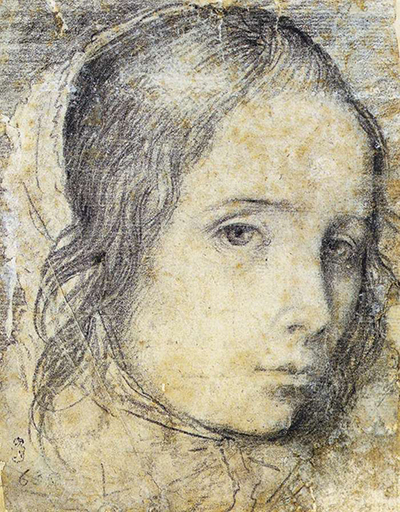Diego Velazquez Drawings
The drawings of Diego Velazquez is an area of his career that has received very little research and many of his attributed sketches are done so with only limited confidence

Of the drawings that remain today, they represent a great variety of styles, mediums and purposes. As such, there is no opportunity to benchmark his work in this medium in order to confidently attribute others.
Some research has been done into comments around his work in the 17th and 18th centuries and these provide some valuable clues as to the unanswered questions that surround his sketch work. Many of the famous names of the Renaissance and Baroque periods have only recently generated interest in their drawings, having previously only received publicity around their frescos and oil paintings.
The whole drawing medium opens up new avenues for art institutions when original frescos from these periods are very hard to obtain, even for a short exhibition. Logistically, some may not even be able to move whilst others are extraordinarily valuable and rarely available for hire.
In recent years that has been some high profile exhibitions would collate drawings by the likes of Raphael and Michelangelo. They have proved popular, there is also considerable interest in the inventions of Leonardo da Vinci.
It is possible that Velazquez's drawings will receive a similar level of research at some point in the future but the task to piece all of the available information together will be a time consuming one. Until that is completed, Velazquez will always be predominantly known as purely as oil painting artist, despite his considerable skills as a draughtsman.
Diego Velazquez's early sketches are believed to have been simple portraits which aimed to capture a local peasant boy. The budding artist was intrigued by his changing expressions from day-to-day and would practice depicting these in a small notebook. His father-in-law, Francisco Pacheco, took note of this and begun to encourage his son to spend more time exploring his artistic talents.
Francisco Pacheco was also the teacher of a young Diego and has been quoted as to his opinions on the importance of the drawing medium as a basis for oil painting. He felt that painters who did not have sufficient drawing skills could not be considered as talented as those who did.
Pacheco will have drawn his young student's attention to the principle within Italian art that drawing was the basis of all that followed, and that it was from this country that the Early Renaissance had initially sprung up. Whilst views in Spain as to the importance of draughtsmanship was more relaxed, he clearly sided with the Italian way of thinking.
Head of a Young Woman

Bust of a Young Woman

One key event in Velazquez's life was his first trip to Italy in 1629-31. He would produce large numbers of study drawings during this time, taking in some of the finest artworks in European history, such as items of Michelangelo and Raphael that were in the Vatican. He is known to have visited Rome and Venice in this trip, with the later giving him opportunities to study Tintoretto's Crucifixion.
Some of the specific frescos that he reproduced in sketches were The Last Judgement and School of Athens, neither of which need any introduction. Sadly, despite being mentioned in text on several occasions, proving of their existance at that time, none of these drawings can now be found.
One common view of Velazquez is that he constantly amended his work directly on the canvas, in a similar way to Italian Renaissance artist Sandro Botticelli. Such a technique would make it marginally less necessary to produce endless study sketches prior to commencing with oils.
There is clear variety in the closeness used by Velazquez from study drawing to final oil painting. In some cases he would faithfully reproduce his sketch in oil form, whilst on other occasions he would use them purely as a rough guide and make considerable changes to the composition of the oil version.
There has been some discussion over where most of the artist's original drawings ended up, with some suspecting a lack of care in their preservation whilst others pointed to the 1734 fire in the Royal Palace of Madrid as the most likely explanations. Some of the more recent attributions that he has received are potentially neither from the correct country nor century to have actually been from Velazquez's hand.
Artist Velazquez used all manner of different media for his sketches, taking in chalk, charcoal, graphite, pen and ink. You will however see from the lists below that black chalk was most frequent.
Confirmed Drawings by Diego Velazquez
According to Gridley McKim-Smith in The Problem of Velazquez's Drawings, the following artworks can reliably be attributed to the hand of Diego Velazquez. A huge amount of research was completed in order to get to this point.
- Study for the Guardian Angel in "Christ after the Flagellation Contemplated by the Christian Soul", 1628. Charcoal on buff paper, inscribed in pen and ink.
- Studies for the Surrender of Breda, 1634-1635. Black chalk on cream laid paper.
- Study for the Portrait of Cardinal Borja, 1637-1645. Black chalk on cream laid paper.
- Studies for the Portrait of Innocent X, 1650. Pen and brown ink over graphite on cream laid paper.
- Portrait of the Beato Simon de Rojas on His Funeral Bier, 1624-1629
- Drawings mentioned by Pacheco
- Drawings mentioned by Palomino
- Studies of a Horse for the Surrender of Breda and Phillip IV Equestrian, 1634-1635.
Drawings Possibly by Diego Velazquez
The following five drawings are potentially the work of Velazquez, but there is not enough evidence or similarity with his other sketches to be able to attribute to him with confidence.
- Studies of a Horse and a Man on Horseback. Charcoal on ivory laid paper.
- Bust of a Young Woman. Black chalk on ivory laid paper.
- Head of a Young woman. Black chalk on ivory laid paper.
- Head of a Boy. Black chalk on yellowish paper.
- Conde-Duque de Olivares. Black chalk on ivory laid paper.
The source for some of the content included in this page and opinions on the authenticity of the various attributions was from The Problem of Velazquez's Drawings by Gridley McKim-Smith - Master Drawings, Vol. 18, No. 1 (Spring, 1980), pp. 3-24+65-70, Published by: Master Drawings Association. You can read this extensive article at https://www.jstor.org/stable/1553521.